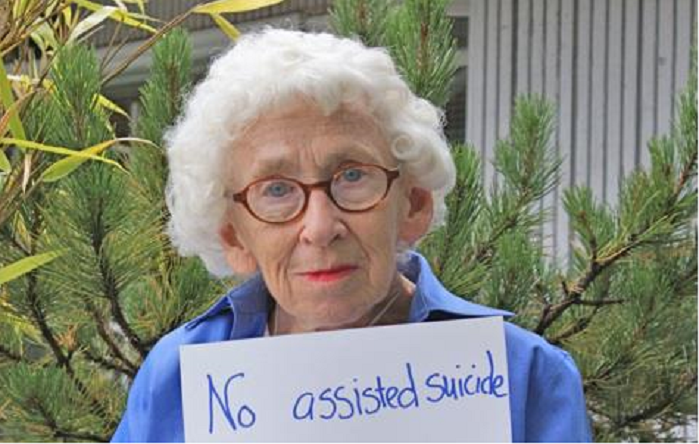Three years after Vermont legalized assisted suicide, pro-lifers are beginning to witness the abusive effects of the law on the elderly and disabled.
Mary Beerworth, executive director of Vermont Right to Life, shared the story of a 91-year-old woman who was staying in a rehab facility because she broke her wrist. When her family was not in the room, Beerworth said rehab staff repeatedly asked the elderly woman if she was in pain or depressed; then they would remind her that she could commit doctor-prescribed suicide under the new law. Beerworth said the woman never was diagnosed with a terminal illness; she just was old and had a broken bone.
Coercion and abuse are major problems in states where assisted suicide is legal. Beerworth said the Vermont legislation makes it worse by requiring that every person diagnosed with a terminal illness be told that they can commit assisted suicide with a doctor’s prescription.
And the pro-euthanasia group Compassion& Choices, formerly the Hemlock Society, hired someone in Vermont to go to geriatric conferences and senior citizens expos to promote assisted suicide, Beerworth said. On their display table, they give away life savers, she said.
“You can’t make this up,” Beerworth said.
The Vermont RTL executive director was one of three presenters during a workshop on assisted suicide at the National Right to Life Convention this week in Virginia. Beerworth, Jennifer Popik, a lawyer with NRLC, and Scott Fischbach, executive director of Minnesota Citizens Concerned for Life, explained how pro-lifers are working with other groups across the country to protect the vulnerable from assisted suicide.
In the past few years, Popik said she has witnessed an unprecedented push to legalize assisted suicide. Currently, four states have legalized assisted suicide in the form of doctor-prescribed suicide: Oregon, Washington, Vermont and California.
Fortunately, pro-life advocates and other groups have been successful in stopping many assisted suicide bills. In 2016 so far, 20 states saw efforts to legalize assisted suicide – and all of them were defeated, Popik said. The pro-life community is not alone in this fight. Disability rights, mental health advocates, elder abuse advocates, faith communities, medical and nursing professionals and others are working together to defeat this dangerous legislation, the panelists said.
However, bills to legalize assisted suicide are still active in Washington, D.C., New Jersey and Pennsylvania; plus, another is expected in Colorado, she added.
Fischbach helped to defeat an assisted suicide bill in Minnesota in 2015. He said many of the state bills are modeled after Oregon’s law, and they have no safeguards in place to protect the elderly, disabled and poor from coercion and abuse.
Euthanasia advocates will claim that there are safeguards, but these so-called safeguards are easily circumvented, Fischbach said. For example, the legislation requires that two witnesses be present when a person requests assisted suicide; but these witnesses can be an heir and a friend of the heir or an abusive caregiver, he said.
The legislation also requires that the patient self-administer the lethal suicide drugs, but it does not require that a doctor or any other professional be there when the person takes them. So, there really is no way of knowing if the person is taking the deadly drugs of their own free will, he said.
“The doctor prescribes lethal dose and never sees you again,” Fischbach said. “The doctor is not there when you die. There is no oversight.”
There also is an economic incentive to push people toward assisted suicide. Popik pointed to evidence of this in Oregon. Its Medicaid program for the poor used to send letters to members, denying coverage for their expensive medical treatment and offering to cover their assisted suicide instead, Popik said. The drugs typically used for assisted suicides are not expensive, she explained.
The letters stopped after media reports prompted wide-spread public outrage, she said.
Popik said euthanasia advocates craft their message to appear compassionate by claiming assisted suicide will offer another option to dying people in severe physical pain. But their real goal is to legalize assisted suicide and eventually euthanasia without limits, Popik said.
As evidence, she pointed to this quote by C&C President Barbara Coombs Lee in USA Today: “It’s not as simple as pain. Everyone gets to identify their own definition of suffering.”
In other words, these euthanasia groups are encouraging suicide rather than medical treatment for people who experience any kind of discomfort that they believe is suffering, Popik said.
Assisted suicide “is the edge of the wedge issue that euthanasia advocates are using” to bring about legalized euthanasia across the U.S., Popik said.








